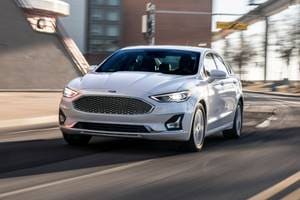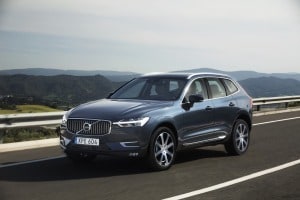X Marks a Different Spot
In 2016, the Tesla hype machine has been focused on the Model 3, Elon Musk (and, more recently, his relationship with Johnny Depp's ex), and Autopilot. Meanwhile, the Model X has quietly rolled out a much higher volume than its predecessor, the Model S. In the U.S., 5,523 Model Xs have been registered in its first nine months of sales which is 1,281 units more than the first nine months of the Model S's life. It is still, however, far-off from the 500,000-unit production target Tesla expects to hit in 2018 when the Model 3 is anticipated to enter the mainstream market. That aside, these 5,000+ Model X buyers have brought greater diversity to the EV brand with a younger, more female, and less West Coast-centric demographic.
Reality Bites Generation
While Millennials are certainly the most talked-about generation, they still lag behind in the car-buying department as soaring transaction prices have proved a roadblock for young people saddled with major student loan debt. Thank goodness for their older counterparts, Generation X, the forgotten generation sandwiched between the Baby Boomers and Millennials. For Tesla, they are the biggest customers of the Model X, which seemingly makes sense since these folks are prime candidates to have young families that require the ownership of a family SUV.

Although neither Model X nor S carry economical price tags, the X is selling to a slightly more affluent buyer with 87% of the buyers having a reported income in excess of $100,000.

More Women but Still Below Averages
Gender is where the Model X is creating the greatest diversity among Tesla owners. In the first nine months of its life, only 14 percent of Model S buyers were women. That's low by any standards – performance car or otherwise. The Model X, on the other hand, has more than doubled that figure with women making up 30 percent of its buyers.

That might be a figure to celebrate at Tesla but it greatly lags in its competitive space. Amongst midsize and large luxury SUVS, the Model X has one of the lowest percentages of female buyers.

Geographic Diversity
California remains the dominant state for Tesla SUV sales, but less so than the Model S. In the first nine months of sales, 50 percent were sold in California compared to 56 percent of the Model S. The entire West Coast, which had accounted for 64 percent of Model S, is proving less dominant for Model X. California, Washington, Oregon account for 55percent of the X's sales.
The SUV has experienced increased popularity on the Eastern seaboard and in the middle of the country. Wisconsin has shown the most notable increase. The Badger State, which made up a paltry 0.3 percent of Model S buyers in its first 9 months, accounted for 2 percent of Model X sales. That represents a 567 percent increase. Other states with notable growth are Arizona, New Jersey, Georgia, Massachusetts, and Florida.
Even with the addition of the Model X, Tesla still only sells to a very small segment of the population. Both vehicles are cost prohibitive for most, since the average purchase price of a new vehicle in the U.S. is $33,000 – significantly less than either the Model S or X. Their real test for Tesla to become an attainable brand will be the rollout of the Model 3, which is expected to hit the market next year. The 370K+ reservations will convert into a sizable sales number (not all reservations will covert to sales) and should bring the EV brand demographic closer to the mainstream.
Jessica Caldwell is the Executive Director of Industry Analysis for Edmunds.com. Follow @jessrcaldwell on Twitter.





